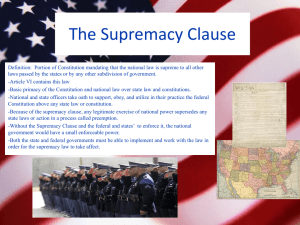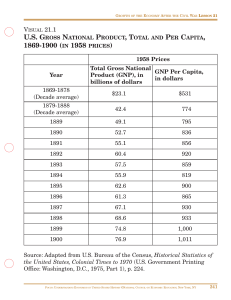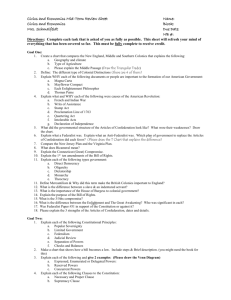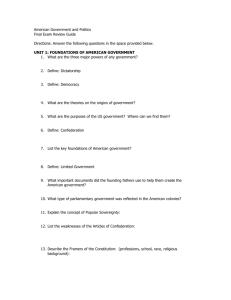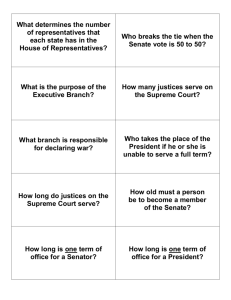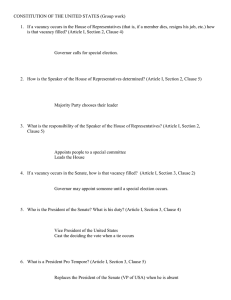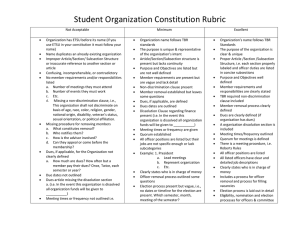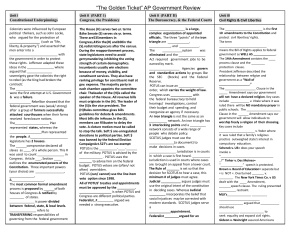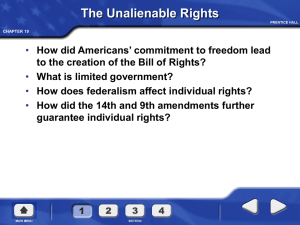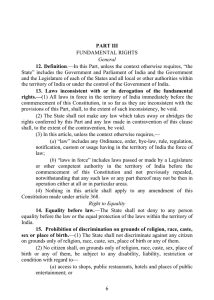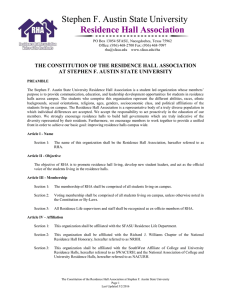Navigating the Constitution KEY
advertisement
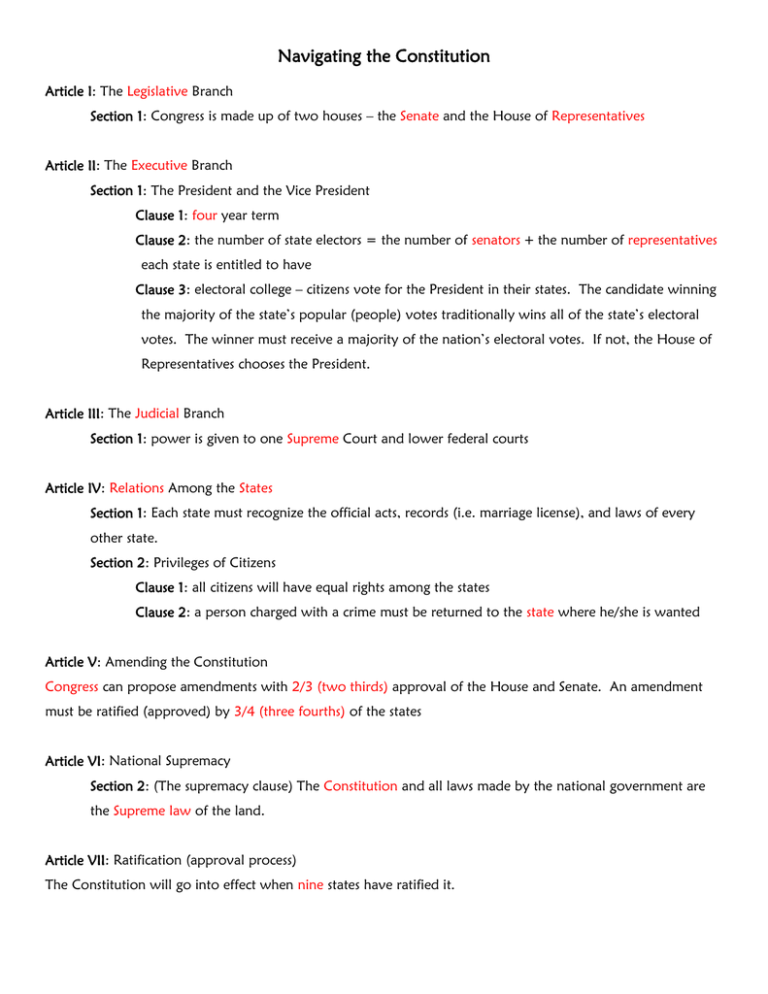
Navigating the Constitution Article I: The Legislative Branch Section 1: Congress is made up of two houses – the Senate and the House of Representatives Article II: The Executive Branch Section 1: The President and the Vice President Clause 1: four year term Clause 2: the number of state electors = the number of senators + the number of representatives each state is entitled to have Clause 3: electoral college – citizens vote for the President in their states. The candidate winning the majority of the state’s popular (people) votes traditionally wins all of the state’s electoral votes. The winner must receive a majority of the nation’s electoral votes. If not, the House of Representatives chooses the President. Article III: The Judicial Branch Section 1: power is given to one Supreme Court and lower federal courts Article IV: Relations Among the States Section 1: Each state must recognize the official acts, records (i.e. marriage license), and laws of every other state. Section 2: Privileges of Citizens Clause 1: all citizens will have equal rights among the states Clause 2: a person charged with a crime must be returned to the state where he/she is wanted Article V: Amending the Constitution Congress can propose amendments with 2/3 (two thirds) approval of the House and Senate. An amendment must be ratified (approved) by 3/4 (three fourths) of the states Article VI: National Supremacy Section 2: (The supremacy clause) The Constitution and all laws made by the national government are the Supreme law of the land. Article VII: Ratification (approval process) The Constitution will go into effect when nine states have ratified it.

